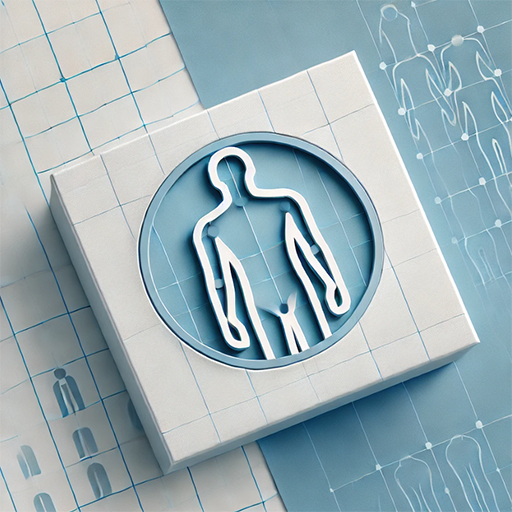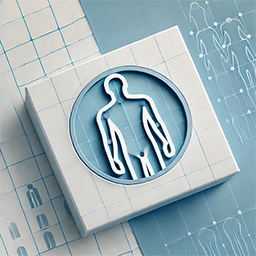Joint pain can make daily life harder than it should be. Simple things like walking up stairs or getting out of a chair can feel like a real challenge. If you’ve ever dealt with stiff knees, sore ankles, or aching hips, you’re not alone. Millions of people struggle with joint pain every day, especially those who are overweight or obese. Carrying extra pounds puts more stress on your joints, which can lead to more pain over time.
The good news? Losing weight can ease that pressure and help your joints feel better. Even a small amount of weight loss can make a big difference. Less weight means less strain on your knees, hips, and back—and that means less pain and more movement.
In this post, we’ll take a closer look at how weight loss can protect your joints, reduce inflammation, and improve your quality of life. Whether you’re just starting to lose weight or need extra motivation to keep going, this guide offers simple tips and support to help you move with ease again.

Why Weight Matters for Joint Health
Carrying extra weight adds more stress to your joints—especially your knees, hips, and lower back. These major joints support most of your body weight as you move throughout the day. When you’re overweight, even basic actions like walking or standing can put a strain on them. According to the Arthritis Foundation, every extra pound you carry adds up to four pounds of extra pressure on your knees. That means just 10 extra pounds could feel like 40 pounds to your joints. Over time, this extra load can lead to pain, stiffness, and even joint damage.
Extra Weight Increases Joint Wear and Tear
Your joints are made to glide and move with ease, but carrying too much weight can interfere with that smooth movement. Over time, the added pressure can lead to serious joint problems. Too much weight can cause:
- Cartilage breakdown, which is one of the first signs of osteoarthritis
- Inflammation, leading to swelling, stiffness, and ongoing pain
- Higher risk of injuries to ligaments, tendons, and other joint tissues
When your joints are under constant stress, they wear down faster. This is especially true for adults over 40, who are more likely to develop arthritis and other joint conditions. Losing even a small amount of weight can help slow this damage and protect your joints for the long term.
Benefits of Weight Loss for Your Joints
Even a small amount of weight loss can make a big difference. You don’t have to lose a lot of weight to feel better. In fact, research shows that dropping just 10 to 15 pounds can ease pressure on your joints and reduce pain. This small change can lead to big improvements in how your knees, hips, and lower back function. Less weight means less stress on your joints—making it easier to walk, move, and stay active every day.
Reduced Pain and Swelling
Losing weight doesn’t just take pressure off your joints—it also helps lower inflammation in your body. When you carry less fat, your body produces fewer inflammatory chemicals. That means less swelling, less stiffness, and less pain in your joints. According to the CDC, weight loss can improve arthritis symptoms and may reduce your need for pain medications. With less inflammation, your joints can move more freely, making everyday tasks easier and more comfortable.
Improved Mobility
Joint pain can make it hard to stay active. When it hurts to move, you may avoid walking, climbing stairs, or even standing for long periods. But when you lose weight and that pain starts to fade, it gets easier to:
- Walk longer distances without feeling sore or tired
- Climb stairs with less strain on your knees and hips
- Exercise more comfortably, helping you stay active and build strength
This creates a healthy cycle: the more you move, the stronger your joints become—and the better they feel over time.
Lower Risk of Joint Replacement Surgery
Being overweight is one of the biggest risk factors for needing joint replacement—especially in the hips and knees. The extra pressure wears down cartilage faster, leading to more pain and damage over time. But there’s good news: maintaining a healthy weight can lower your risk of needing surgery. In many cases, losing weight can delay the need for a joint replacement—or even prevent it altogether.
How Much Weight Do You Need to Lose?
You don’t need to reach your “ideal” weight to feel the benefits. In fact, research shows that losing just 5% to 10% of your body weight can make a real difference in joint health. You don’t have to be perfect—just making progress counts.
For example, if you weigh 200 pounds, losing just 10 to 20 pounds could:
- Ease pressure on your knees, hips, and lower back
- Lower inflammation, which can help reduce pain and stiffness
- Boost energy and mobility, making it easier to stay active
Even small changes can lead to big improvements in how you feel and move every day.

The Connection Between Weight and Osteoarthritis
Osteoarthritis (OA) is the most common form of arthritis. It occurs when the cartilage in your joints gradually breaks down, causing pain, swelling, and stiffness. Over time, this damage can make it harder to move your joints. Being overweight can speed up this process, as the extra weight puts additional pressure on your joints, especially in areas like the knees, hips, and lower back. This added stress can cause the cartilage to wear down more quickly, leading to an earlier onset of osteoarthritis symptoms.
How Weight Affects Cartilage
Cartilage acts as a cushion between your bones. It helps your joints move smoothly and comfortably without friction. However, carrying too much weight can put added pressure on this cushion, leading to:
- Compression of the cartilage, which reduces its ability to protect your joints
- Tiny tears in the cartilage, making it weaker and less effective
- Painful bone-on-bone rubbing as the cartilage breaks down, causing more pain and discomfort
Over time, this increased stress can lead to stiff, swollen joints that are harder to move, making everyday activities more difficult.
Weight Loss Can Slow OA Progress
While weight loss won’t reverse osteoarthritis (OA), it can slow its progression. Losing weight helps reduce the pressure on your joints, which can slow down the wear and tear on cartilage. While it won’t cure OA, maintaining a healthy weight can significantly reduce the pain and discomfort that come with it. Additionally, weight loss lowers the need for medications by helping to manage symptoms naturally. This can lead to better long-term outcomes, allowing you to maintain better mobility and quality of life for years to come.
How to Lose Weight for Joint Health
The best approach is a mix of healthy eating and low-impact exercise. Here’s how to get started:
1. Eat Anti-Inflammatory Foods
Choose foods that fight inflammation and support weight loss:
- Leafy greens (spinach, kale)
- Fatty fish (salmon, sardines)
- Berries and citrus fruits
- Whole grains (oats, quinoa)
- Nuts and seeds
Limit processed foods, sugary snacks, and fried foods.
2. Drink Plenty of Water
Staying hydrated helps your joints stay lubricated and your body flush out toxins. Aim for 8–10 cups of water per day.
3. Try Low-Impact Exercises
Protect your joints while staying active:
- Swimming: Full-body workout that’s easy on joints
- Walking: Simple and effective, even for beginners
- Cycling: Great for knees and hips
- Yoga or stretching: Increases flexibility and reduces stiffness
Start slowly and build up your activity over time.
4. Track Your Progress
Use a journal or app to track:
- Your weight
- What you eat
- Your daily movement
- Pain levels
Tracking helps you stay motivated and see the benefits clearly.
Tips for Staying on Track
Weight loss is a journey, not a race. Here are some tips to help you stay motivated:
- Set small, realistic goals (like 1–2 pounds per week)
- Celebrate non-scale victories like walking without pain or climbing stairs with ease
- Find a support system—friends, family, or an online community
- Talk to your doctor or a physical therapist for personalized advice

Weight Loss Success Stories: Real Joint Relief
Many people have found that even modest weight loss changed their lives. For example:
“After losing 25 pounds, I could walk around the block without knee pain. I hadn’t done that in years!” – Marilyn, 63
“My doctor said I could delay knee surgery if I lost weight. I started walking every day and dropped 30 pounds. Now I feel like a new person.” – Carlos, 54
Stories like these show that it’s never too late to take control of your joint health.
When to See a Doctor
If joint pain is stopping you from moving or affecting your sleep, talk to a healthcare provider. They may suggest:
- Blood tests to rule out other issues
- X-rays or MRIs to check for joint damage
- A plan that includes physical therapy or medications
Early treatment combined with weight loss often leads to better results.
Conclusion: Your Joints Will Thank You
Losing weight doesn’t just make you look better—it helps you feel better, too. Your joints carry the weight of your daily life. Giving them a break by shedding extra pounds can ease pain, improve movement, and boost your quality of life.
Start small, stay consistent, and celebrate every step forward.



